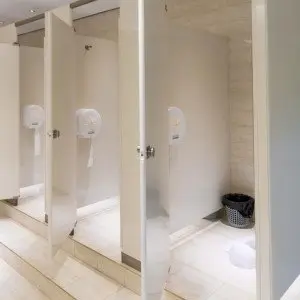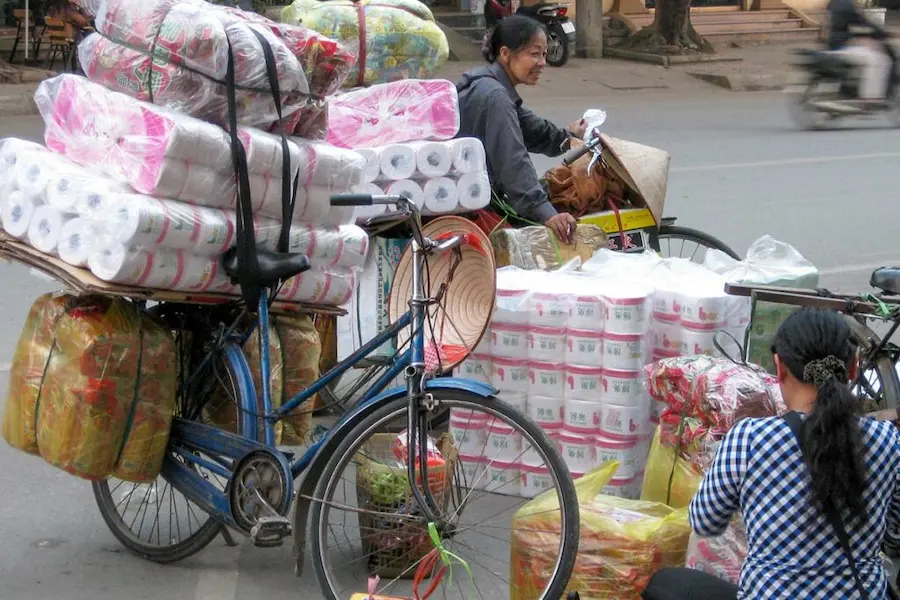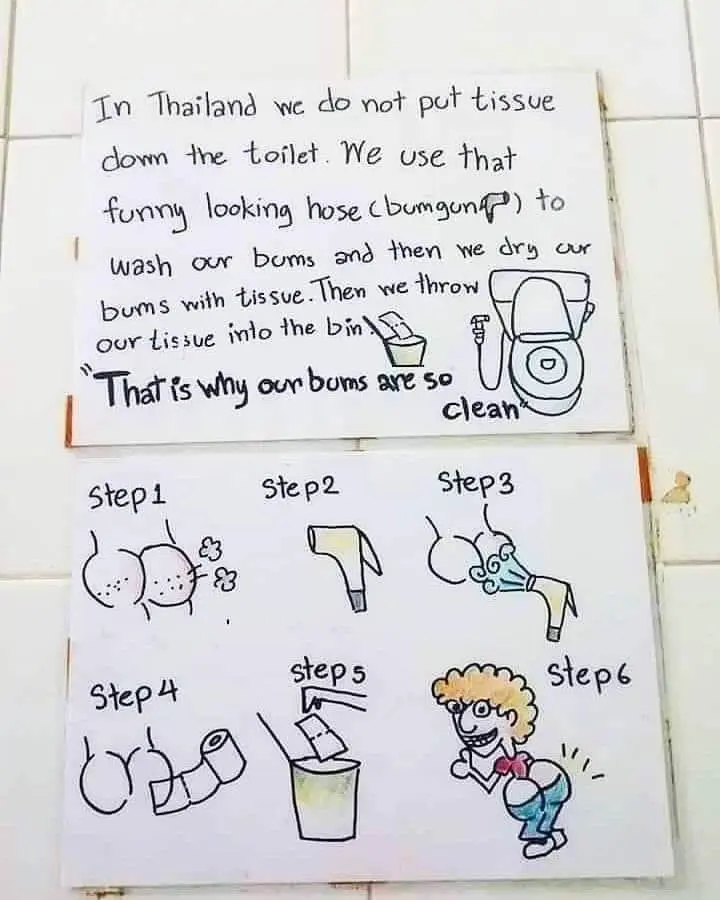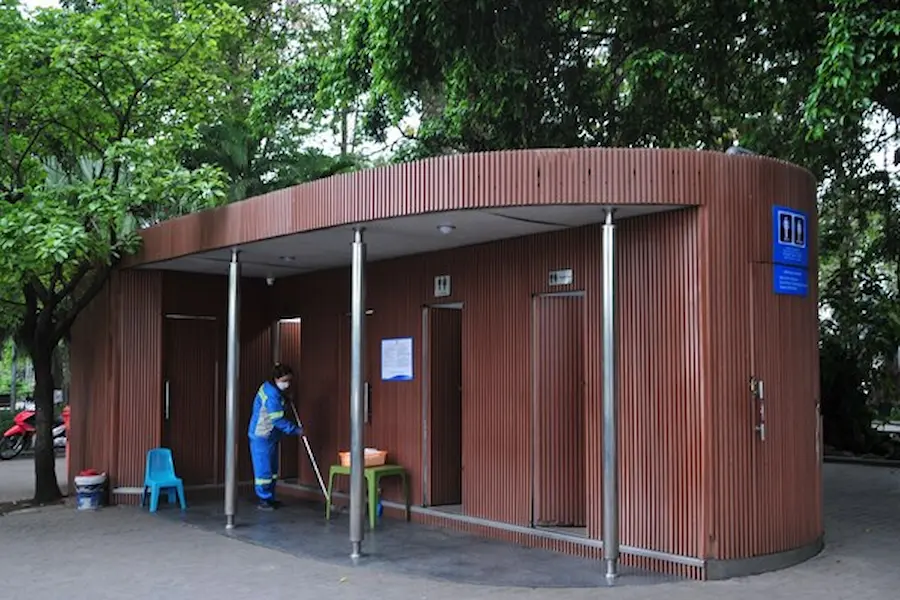Toilets in Vietnam - a subject no one really asks about when planning a trip, but trust me, once you’re here, you’ll want to know. From the squat toilets of roadside stops to the “bum gun” found in almost every bathroom, navigating restrooms here can feel like part of the cultural experience.
As a Vietnamese local, I’ve seen countless travelers caught off guard by our bathroom culture. So instead of learning the hard way, let’s break it down. This guide will give you everything you need to know about toilets in Vietnam, with real tips that will actually make your trip easier.
Squat Toilets vs. Western Toilets
The first big question: will you have to use a squat toilet? The answer is sometimes.
In the big cities - Hanoi, Ho Chi Minh City, Danang - you’ll mostly find Western-style toilets. Hotels, resorts, malls, cafés, and even many homestays are equipped with modern bathrooms. In fact, government hygiene regulations have encouraged the switch, so Western toilets are becoming the norm along popular tourist routes.
But venture outside the cities, and you’ll still meet the squat toilet. At rural bus stations, village markets, or roadside stops, the porcelain squat toilet is common. Travelers new to it often hesitate, but locals see it as practical and hygienic: no skin contact with the seat, quick, and easy to clean.

Public Toilets in Vietnam
Here’s the thing: public restrooms are not everywhere. Vietnam doesn’t have a culture of free, plentiful public bathrooms like Japan or the U.S.
For women, this can be trickier. Vietnamese men sometimes relieve themselves outdoors, but women obviously don’t have that option.
The easiest fix? Use the facilities in cafés, restaurants, shopping malls, and hotels. Coffee shops are everywhere in Vietnam, and buying a drink for less than a dollar usually gives you restroom access.
You may also encounter toilets that charge a small fee, usually 2,000–5,000 VND. Keep a bit of loose change handy. Don’t expect five-star cleanliness in those places, but at least they provide a working option.
Flushing Toilet Paper: The Golden Rule
This one shocks most foreigners: do not flush toilet paper in Vietnam.
Why? Because most sewer systems - especially in older areas like Hanoi’s Old Quarter or Ho Chi Minh’s colonial neighborhoods - simply can’t handle it. Flushing paper leads to clogs, overflows, and very unhappy cleaners.
Instead, you’ll notice a small trash bin next to the toilet. That’s where used paper goes. It might feel odd at first, but it’s the local way, and everyone does it. If you’re staying in a very modern hotel with upgraded plumbing, signs may tell you it’s safe to flush - but when in doubt, use the bin.

The Water Hose (a.k.a. Bum Gun)
Next to almost every toilet in Vietnam is a spray hose, affectionately nicknamed the “bum gun” by travelers. Locals use it to wash instead of wiping with paper alone.
Here’s how it works: point, press gently, rinse. Then use a small amount of paper to dry, and toss the paper in the bin. Done.
It might feel intimidating the first time, but most foreigners I know actually fall in love with it. Some even say they miss the bum gun when they go back home—it’s cleaner, more eco-friendly, and surprisingly refreshing in hot weather.
Insider note: In very rural places, you might not even find a hose - just a bucket of water with a ladle. Same principle, just low-tech.

Toilets on the Road: Buses, Trains, and Cruises
Buses: Most long-distance buses don’t have onboard toilets. Instead, drivers stop every 2–3 hours at rest stations. These restrooms are often basic, and yes, sometimes squat-only. Bring tissues.
Trains: The famous Reunification Express train between Hanoi and Ho Chi Minh City has toilets, but they get less pleasant as the journey goes on. Use them early in the trip, not after ten hours.
Cruises: On Halong Bay cruises or river tours, restrooms are usually clean, Western-style, and regularly serviced.
Hygiene Standards: The Honest Truth
Let’s be real: not every bathroom in Vietnam is spotless. Some are excellent, some are… less so. That’s part of travel here.
Always carry:
Tissues (many places don’t supply paper)
Hand sanitizer or wipes (soap is hit or miss)
A sense of humor (because sometimes, you’ll need it)
If you’re squeamish, plan bathroom breaks around cafés, hotels, or malls rather than rolling the dice on a bus station restroom.
Traveler Tips from a Local
Here’s how to make toilets in Vietnam a non-issue:
Don’t leave your accommodation without tissues and sanitizer.
Remember the bin rule: no flushing paper unless told otherwise.
Embrace the bum gun - trust me, it’s better than it looks.
If desperate, duck into a coffee shop. A $1 iced coffee gets you caffeine and a clean restroom.
For long trips, “go” before you board.
Why This Matters for Your Trip
It sounds like a small detail, but bathrooms can make or break your day of travel. Nothing kills the excitement of exploring Hanoi’s Old Quarter or trekking in Sapa like stressing over where the next toilet is.
Knowing what to expect about toilets in Vietnam means fewer surprises, fewer awkward moments, and more time enjoying the real highlights of the country.
And if you don’t want to think about these little details at all? Book a guided trip. Tour guides always know the cleanest spots and keep the group comfortable.
Check out our Vietnam vacation packages for stress-free travel, complete with insider support (and bathroom know-how).
Final Thoughts
Toilets might not be glamorous, but they’re part of the travel story. Once you get used to squat toilets, the bum gun, and the “bin not flush” rule, you’ll feel more like a local and less like a confused tourist. It’s just another piece of the adventure - and one you’ll laugh about later.



